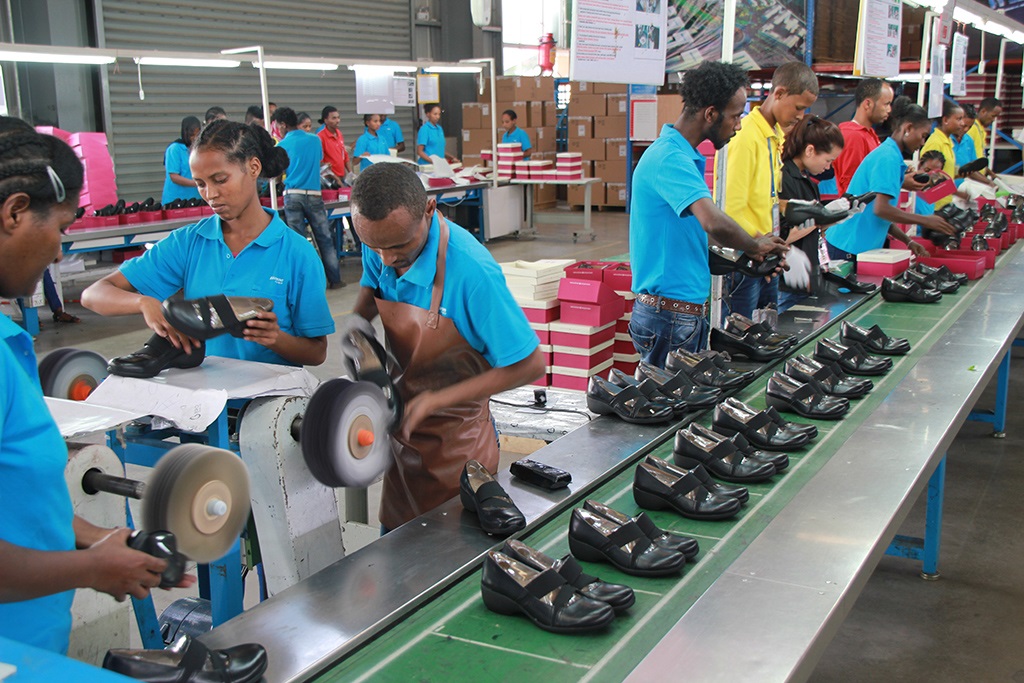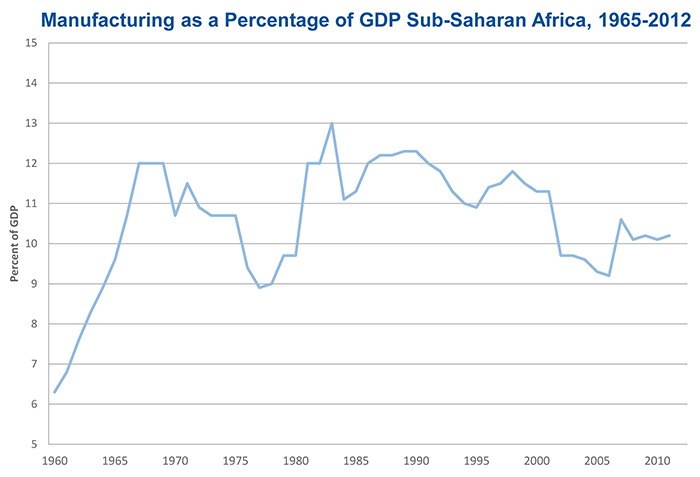Blog
Made in Africa – the future of production on the continent
The international community has a new set of development goals. They reflect Africa’s aspirations much more closely than the Millennium Development Goals (MDGs) they replaced. In addition to a maintained focus on the eradication of poverty, their single most important contribution is to recognize that sustainable development, especially in Africa, means creating good jobs – jobs that pay living wages and offer a chance to develop new skills.
In Africa today, only one in five workers finds employment in the wage economy. The rest are forced to settle for low-paying jobs, often through self-employment or in the services sector, where output per person is only about twice that in agriculture.

The Sustainable Development Goals, which took over from the MDGs, also suggest how to grow good jobs. Goal 9 of the SDGs sets as an objective to “by 2030, significantly raise industry’s share of employment and gross domestic product”. Industry is singled out because it is a high productivity sector capable of absorbing large numbers of moderately skilled workers. Between 1950 and 2006, about half of the catch-up by developing countries to advanced-economy levels of output per worker was explained by labour moving out of agriculture and into manufacturing, combined with rising productivity within industry. In Africa, manufacturing output per worker is six times that in agriculture.
Industrial development in Africa
For more than 40 years Africa’s industrial development has been disappointing. In 2013 the average share of manufacturing in GDP in sub-Saharan Africa was about 10% – the same as in the 1970s. Africa’s share of global manufacturing has fallen from about 3% in 1970 to less than 2% in 2013. Manufacturing output per person is about a third of the average for all developing countries and manufactured exports per person, a key measure of success in global markets, are about 10% of the global average for low-income countries. Clearly, Africa needs more industry to create more good jobs.

A need to break new ground
Most of the heavy lifting in terms of public action will need to be done by African governments. To industrialize successfully, Africa will need to revisit the policy orthodoxy and break new ground. The “investment climate reforms” of the World Bank, supported by some bilateral donors, have not and will not bring industry to Africa on their own. Industrialization cannot succeed without the development “basics” that include infrastructure, skills and institutions. But these building blocks, while necessary, are not enough.
Drivers of productivity
Three closely related drivers of firm-level productivity – exports, agglomeration and firm capabilities – have been largely responsible for East Asia’s industrial success, and their absence also helps to explain Africa’s lack of industrial dynamism. These three drivers of productivity and industrial location are fundamentally interrelated. Progress in one area cannot succeed in the absence of progress in the others. In short, a strategy for industrial development is needed, and an active and committed government to implement it is indispensable. To compete in the global market for manufacturers, African governments need to develop new policies to promote industrial exports, build the capabilities of domestic firms and foster industrial clusters. These policy initiatives need to be coordinated and contemporaneous.
Africa and aid
There is a need to re-examine the aid industry’s approach to the investment climate, let go of the soft target of regulatory reform and ramp up support for infrastructure and skills. While the SDGs work towards more infrastructure and better skills, they are short on the specifics of how to meet them. Given fiscal and political realities in the donor countries, a massive increase in Official Development Assistance (ODA) is unlikely. New financial initiatives by the International Financial Institutions (IFIs) and bilateral agencies are needed to help reduce the risks to private investors.
International support for export-led industrialization must act on three fronts: aid to improve trade logistics, support for regional integration and policies to increase preferential market access. Trade-related infrastructure is critical to export success, and Africa suffers deficits in almost every aspect. Donors, however, have not lived up to their commitments to “aid for trade” and need to take the formation of Special Economic Zones (SEZs) more seriously. Higher-income countries should also develop a common, time-bound system of preferences for Africa’s non-traditional exports. At present, different OECD countries have different trade preference schemes, and most of them are not well designed or effective.
Findings and recommendations
1. In Africa manufactured exports per person are about 10% of the global average for low income countries.
2. Three closely related drivers of firm-level productivity – exports, agglomeration and firm capabilities – have been largely responsible for East Asia’s industrial success.
3. The absence of these drivers in Africa helps to explain continent’s lack of industrial dynamism.
4. Increasing the amount of industry in Africa is key to creating good jobs.
5. African governments will need to develop a mixture of policies – some orthodox and others novel – aimed at attracting new industries and boosting the productivity of existing companies.
This article was originally published on the blog Agenda by the World Economic Forum. Read the original article.
The views expressed in this piece are those of the author(s), and do not necessarily reflect the views of the Institute or the United Nations University, nor the programme/project donors.
 Join the network
Join the network




